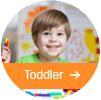Identifying and Dealing with Social Anxiety in Children
Social Anxiety in Children: The concept of ‘social anxiety’ may sound more like a teenager or younger adult issue.
Surprisingly though, it can affect toddlers and those under 10. That means identifying and dealing with social anxiety in children is important.
What is social anxiety in children?
This usually means that a child worries extensively and regularly in advance about socially interacting with others around them in many or even all social environments. That concern may be so great that it means the child seeks ways to avoid doing so or if they have no choice but to be present, they may be silent, withdrawn and reluctant to participate.
In some cases, the cause can be attributed to trauma.
Children who have an unusual physical feature may have been mocked and taunted by schoolmates and are therefore reluctant to engage with them again in future. Possibly the child struggles to participate in sport and is again, ridiculed by the peer group. Bullying has also been identified as a causative factor in certain circumstances.
In many instances though, the exact cause can be very hard or even impossible to identify. Although the precise mechanisms are not understood, it does seem as if some children appear to have a natural predisposition towards social anxiety even when there is seemingly no clear reason.
Differences between shyness and social anxiety in children
Shyness is not unusual in adults and children. It usually means children being slow to engage with others or requiring some time, perhaps several such engagements with the people concerned, before their confidence levels permit them to engage openly and freely with the person or persons concerned.
Shyness in itself may cause some social awkwardness if it continues into adolescence and younger adult life but often clears itself up as a child ages.
Social anxiety is usually more all-pervasive and operates at a more severe level of intensity. In some cases, it may even result in children refusing to use the telephone or meet with people they know well, like close family members.
It may take a professional to identify if a child is simply shy or is suffering from social anxiety syndrome. This syndrome has been diagnosed in children as young as four.
What you can do
Unfortunately, there is no known ‘quick fix cure’ for social anxiety in children.
Talking to your child may help you identify, at times, the underlying cause. That might apply in cases where the problem has its origins in something like ridicule and bullying at school.
You might also try:
- asking your child, if they’re old enough, to explain to you what they’re thinking and feeling when they’re demonstrating a reluctance to engage with others. Don’t be disappointed if this doesn’t lead to anything dramatic though, as children may be reluctant to share such feelings or they simply may not understand them;
- taking a step-by-step approach. Make sure you’re present but encourage your child to talk to and play with one child at a time. When that has worked, try making it two children and so on;
- notifying your pre-school centre or school. They will certainly be familiar with this problem and have techniques to help during the day;
- trying to avoid ‘stepping in’ for your child when they’re in social situations. Encourage them to play their own role more or less independent of you;
- if your child continues to struggle with social anxiety and your efforts have yielded little improvement over say 6-9 months, you should consider speaking to a professional child development specialist or your doctor.
How serious is the condition?
Social anxiety is rarely ‘serious’ in children. It typically resolves itself spontaneously over time or it often improves tremendously with professional help.
If ignored though, it may increasingly isolate a child from the wider aspects of society around them and that isn’t desirable, as it might lead to longer-lasting psychological damage they could carry forward into their teenage years.













